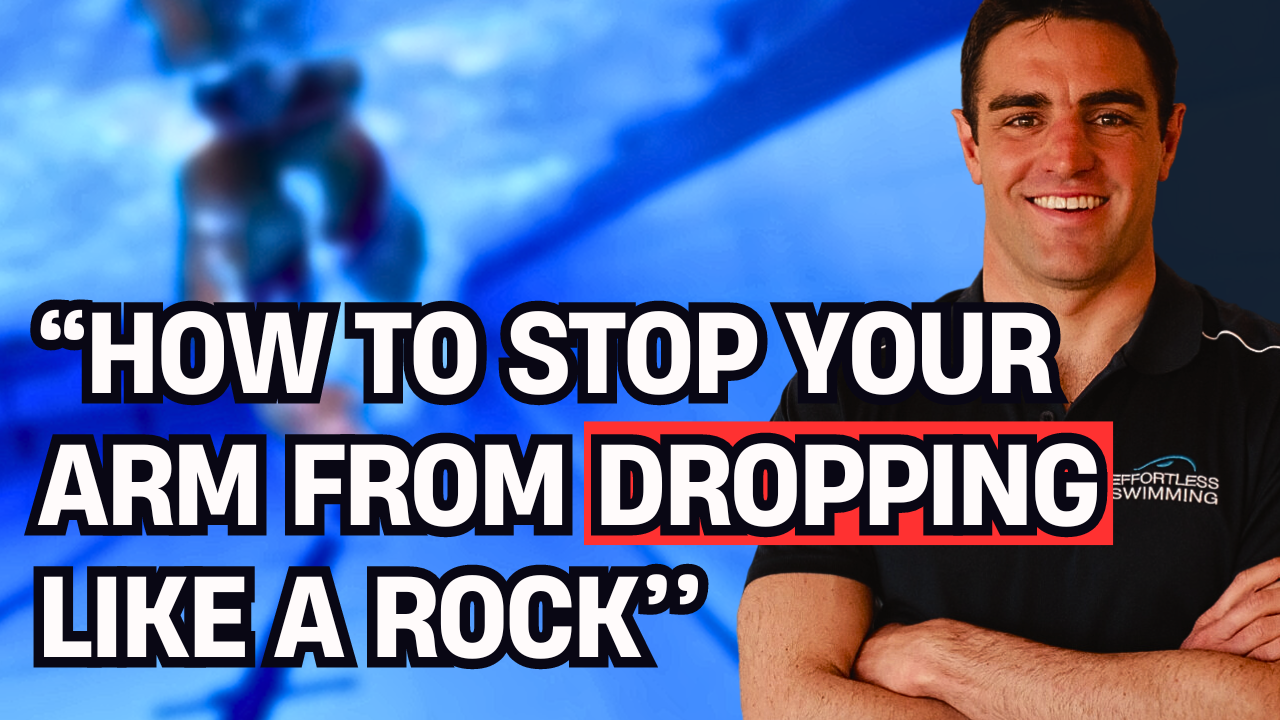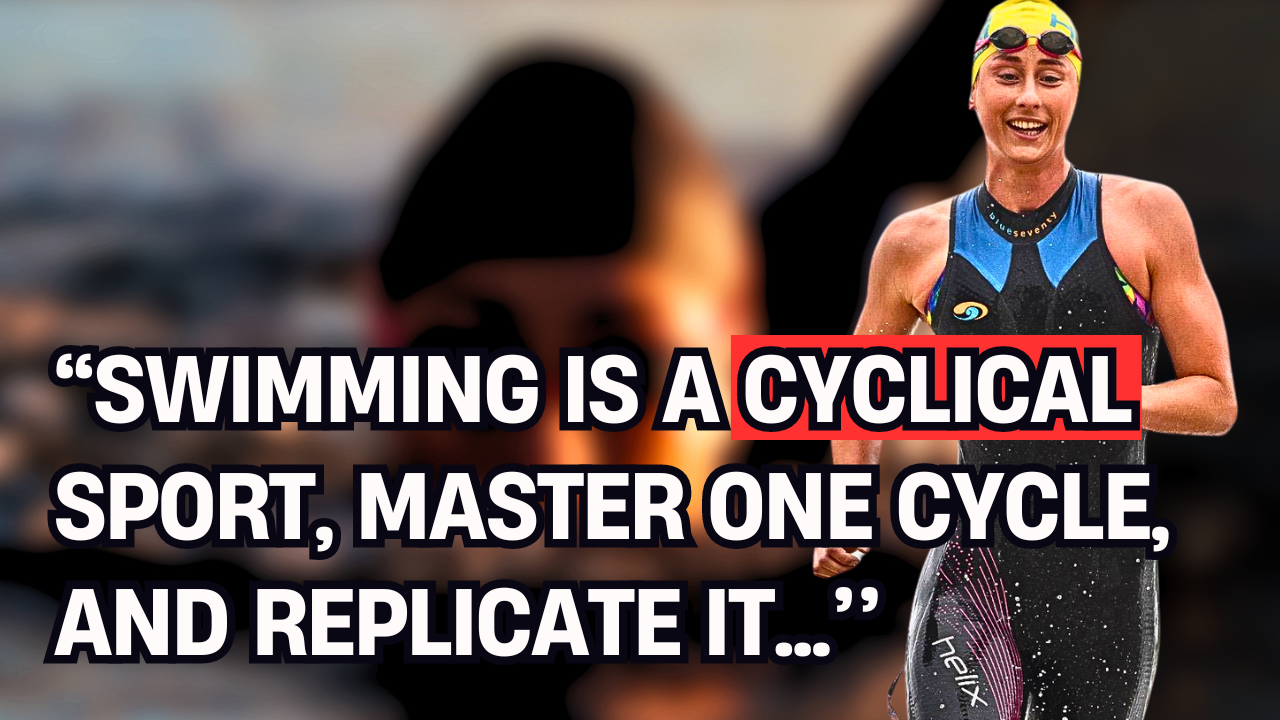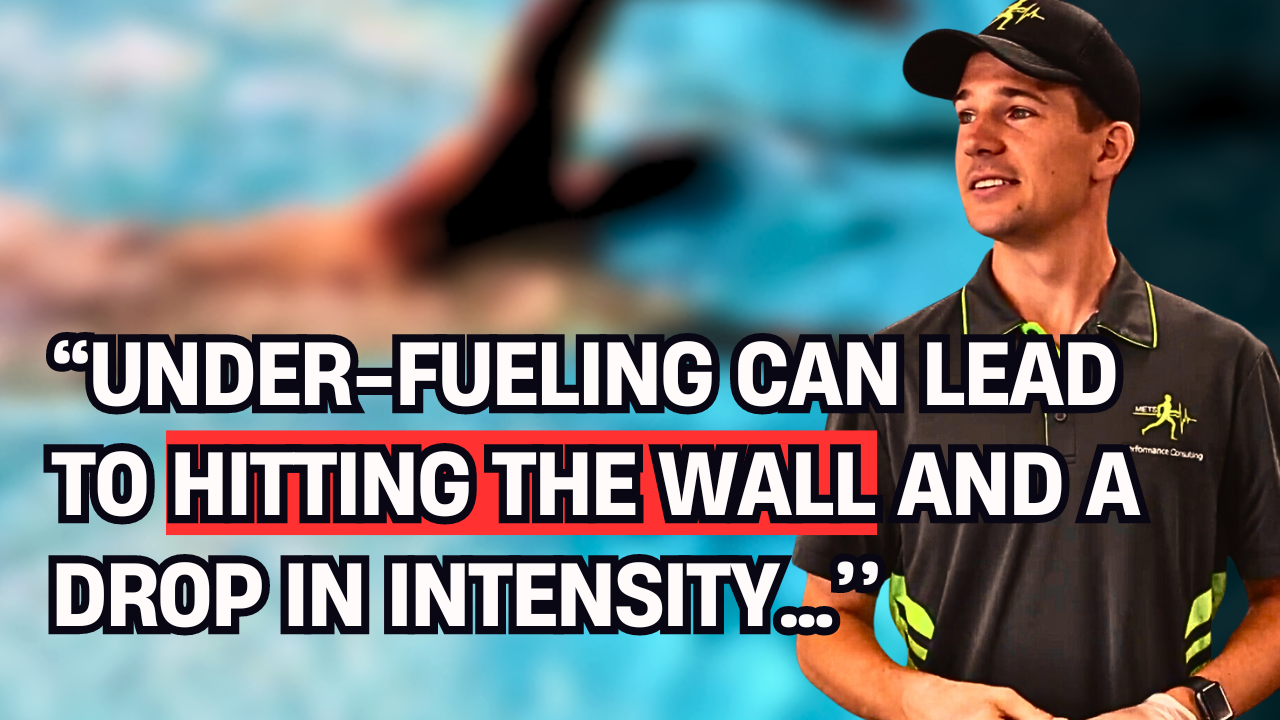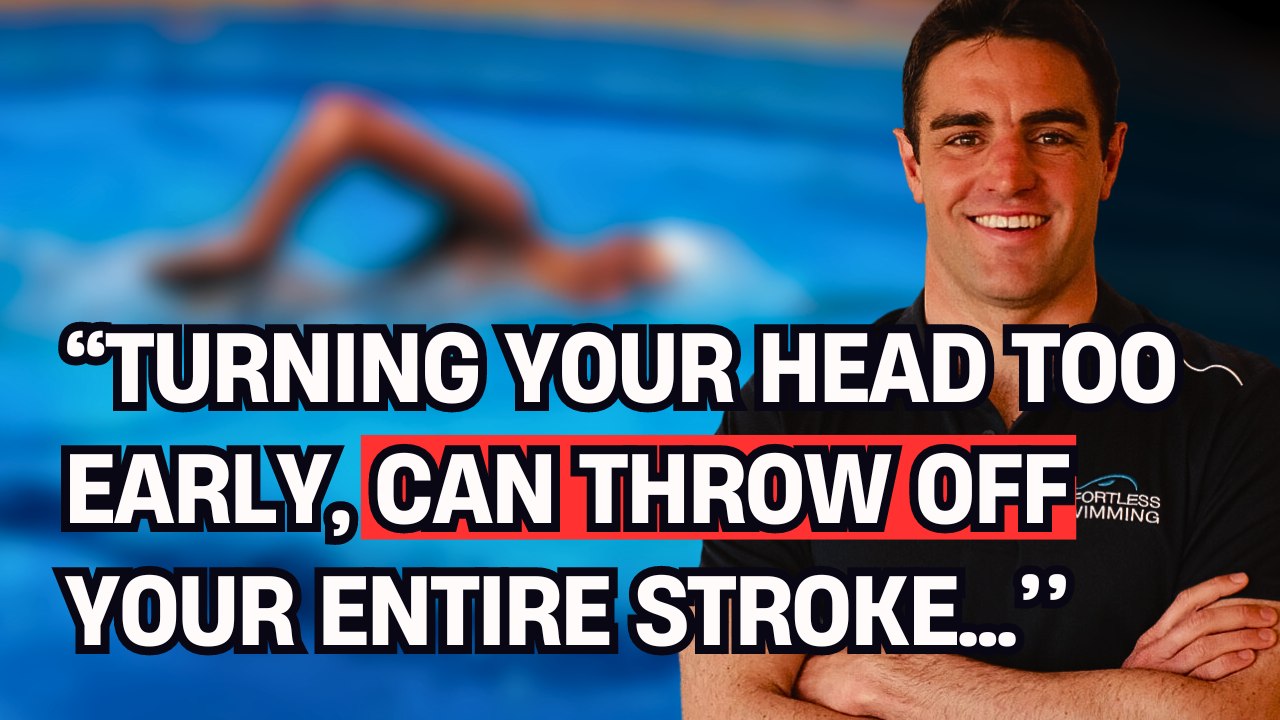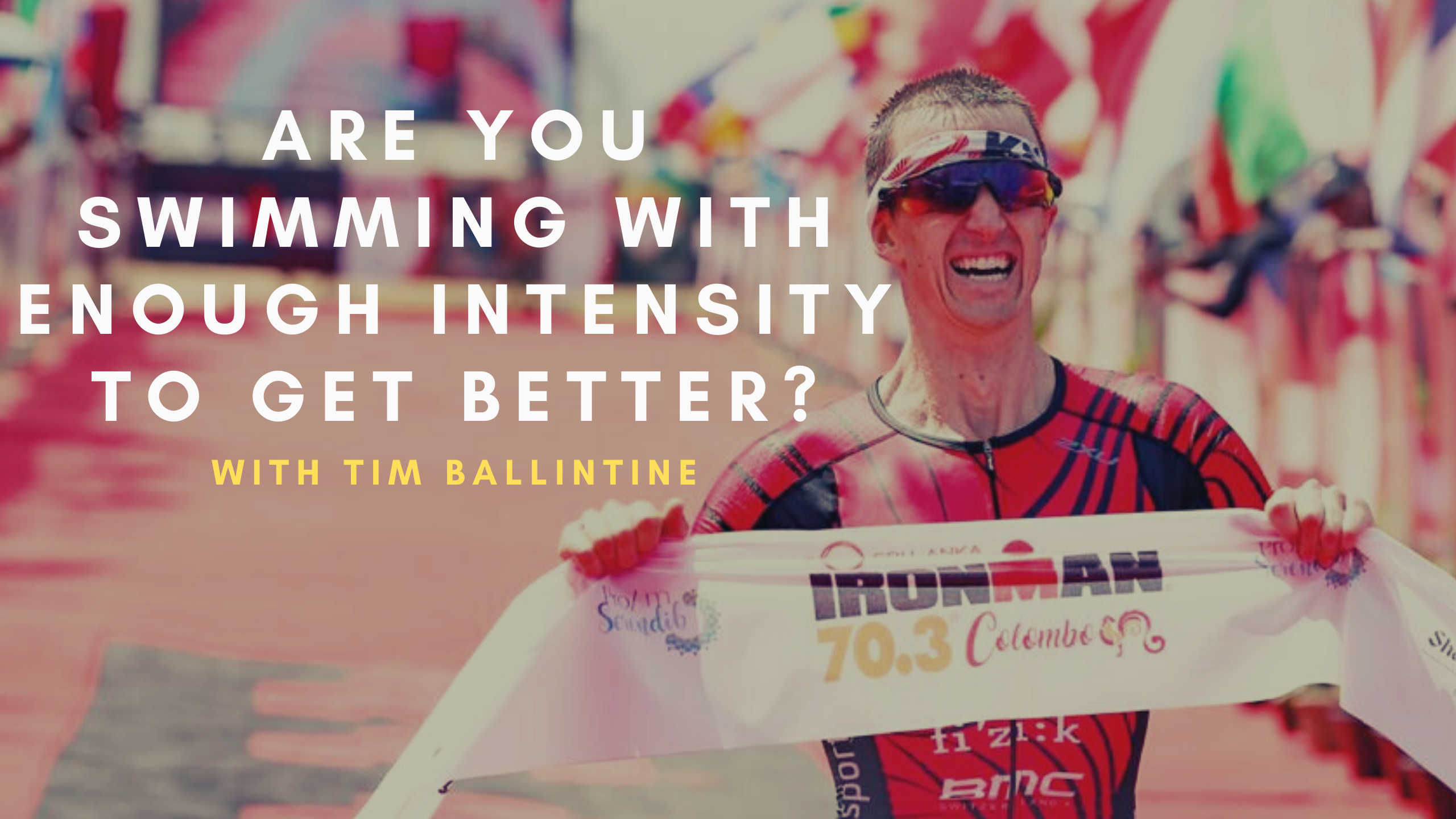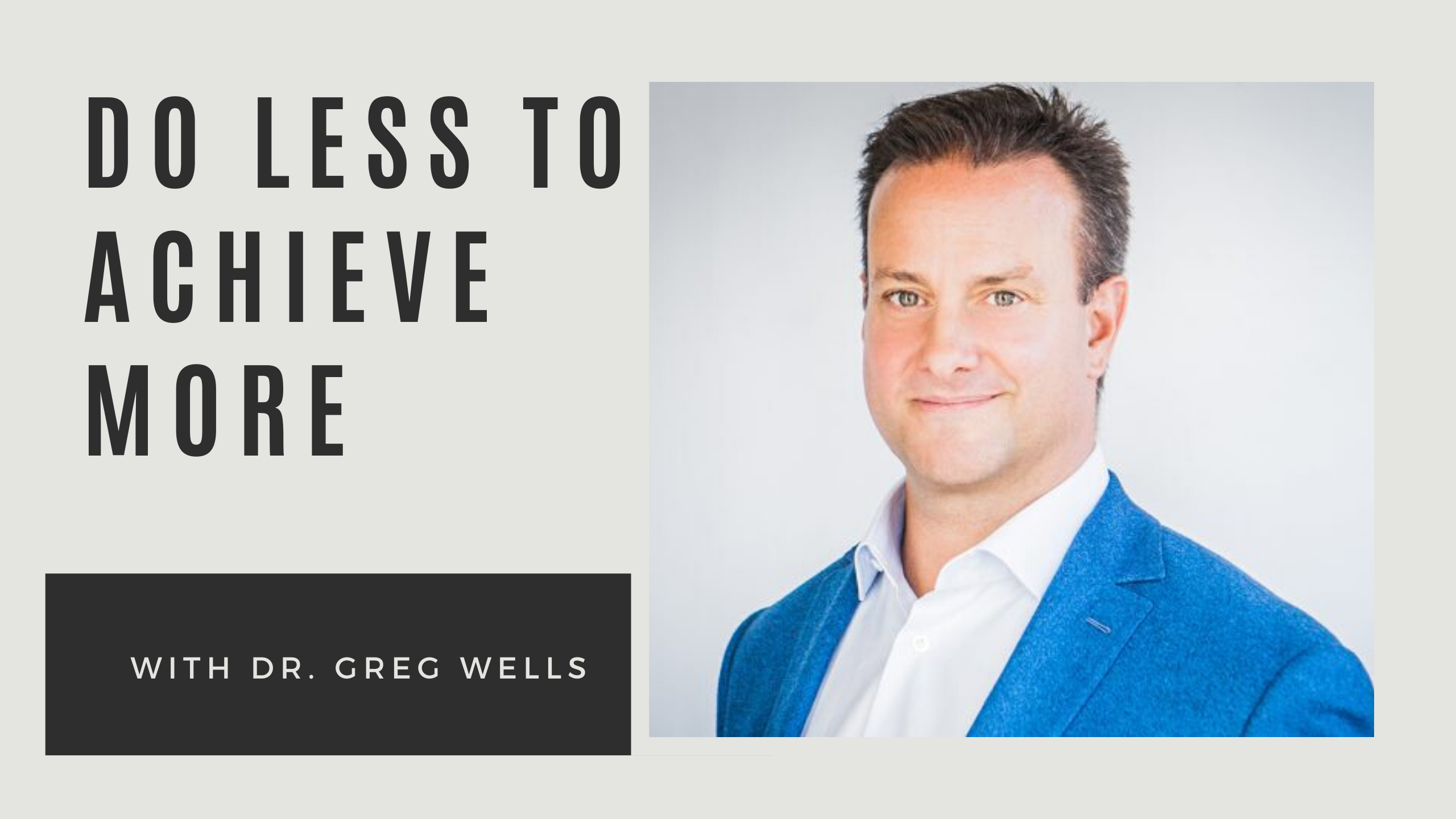Marc Evans joins us in this episode to talk about the possible things you can do at your home during these times. In this episode, Marc discussed maintaining the feel of the water, the importance of mobility, stability, and flexibility.
00:38 Triathletes In Motion
02:40 It’s Not The Strongest Athlete That Wins The Gold Medals
06:19 Functional Strength
06:58 Most Of The Triathletes Underswim In Volume
08:01 Having A High Elbow Catch
08:40 Sculling Your Hands In A Tub Of Water
10:10 Mobility Test
11:30 Technique Is Related To Mobility And Stability
12:43 Put Your Heart Monitors And GPS Aside
17:24 Using Therabands
18:55 If You Can Get It Right Out Of The Water, You Can Get It Right In The Water
19:18 Fingertip Wall Slide
22:42 Q Swim App
23:09 Swimm Specific Yoga
23:48 Cold Showers
Effortless Swimming Camps
Noosa
Hawaii Swim Camp
2020 Hell Week Camp (Thailand)
Online Membership
Freestyle Clinics Around Australia
Transcription:
Brenton Ford:
Welcome to the Effortless Swimming podcast. My guest today is Mark Evans.
Brenton Ford:
You were on our podcast a couple of years ago and, from memory, it was the most listened to podcast that we’ve ever had and I think for good reason. And what we’re going to talk about today is the situation most people are in right now is that they can’t get to a pool. So what can they do for the next couple of weeks, potentially a couple of months, to possibly keep their swimming fitness, somehow keep their feel for the water and so by the time that they can get back into the pool then they can start training again, that they won’t be too far from where they were when all of the pools closed. And I think you’re probably the best person to speak to, because in front of me I’ve got your book which is Triathletes in Motion and it’s probably, well I’d say, it’s the most in depth, comprehensive book on movement for triathletes that is out there. And I know we’ve spoken about this before, but there’s so much detail and thought that’s gone into the book and looking through it now it is really like a Bible for movement for triathletes. So I think you’re probably the best person to speak to.
Mark Evans:
Oh, I appreciate that. That’s quite a compliment coming from you. I really appreciate it. Yeah, we put quite an effort into that book and maybe it’ll be around for a long time, because it is, I think, a pretty instructive resource for coaches and athletes and exercise science people. But yeah, we do focus on the movement and I think that’s why I was thinking about you and what you’re doing and what people do during these difficult, surreal times that we’re in with the COVID19 and so forth, and pools are pretty much closing everywhere I know. And it reminded me that it’s no different than when I used to coach, clients would go on holiday or something like that and we were swimming 15,000 or 20,000 meters a week, how do we keep them fit? What are kinds of exercises that they need to do in order to maintain some fitness in their swimming?
Mark Evans:
And so I asked myself the questions back then, and even just the other day when I was thinking about this podcast was, “What’s the most important thing?” And I think it might be surprising to the listeners, but it’s not strength, it’s feel. It’s how you feel in the water. And if you can’t get in the water, there’s always the bathtub, there’s even a kitchen sink, there are hot tubs sometimes, even just a few seconds of sculling can add or help maintain that feel for the water. And a technique is by far and away the single most important thing in swimming. And so what you do for so many people is to help them develop their technique. I think I’m kind of speaking to the choir here.
Mark Evans:
But I will just say that one of my business partners, [Jane Cappaert PhD, we worked together at the Olympic training center and also the International Center for Aquatic Research in Colorado Springs and she was working on studies that identified that it’s not the strongest athletes that win the gold medals, it’s the ones with the highest amount of efficiency and technique. And so with that said, that’s kind of my segue into a lot of athletes think that a strength is what you work on, say for example, when they’re doing pulling sets, using hand paddles, and I’ve seen even some of my older paddles, the contour paddle, the slim foil paddles that I invented and patented years ago that kind of set a standard for design, I’ve seen them being used. And even on some podcasts, they talk about how paddles improved strength and strength isn’t the thing, it’s technique. And that’s why we made the shapes that we did years ago and whatnot. So it’s really about technique and it’s what you do and what you do in your podcast.
Brenton Ford:
And I think there’s… Particularly for triathletes, you certainly need both to have a… Especially over the longer distances. Let’s say it’s an iron man race, technique I’d say is certainly number one, but to sort of race well across that distance, you still want to have the strength there. But without the technique then you’re just going to be working very hard. And I think what a lot of people may not know about your background was that you’ve designed products and had a number of paddles that have been licensed by Speedo for a very long time. And so your background’s in not only coaching at a very high level, but also product design and we’re kind of working on something at the moment, which is a swimming paddle that’s going to help people with their catch and their pull. And it’s a very unique design, and I can’t wait until we get to share this when we’re at that stage. But it’s something that I think will make a big difference for people who are looking to improve their technique. And we’ll talk about this down the track when we’re a little bit closer to it, but in terms of what can someone do if they’re listening to this and they can’t get to a pool, where should they start? What would the first thing that you’d advise your clients to do if you’re coaching them today?
Mark Evans:
Well, what I like to say in terms of strength, it’s functional strength. I mean you have to have the commensurate strength in order to complete the movement and complete the exercise. And so that includes not only your flexibility but the joint mobility and the stability of the area and the muscles. So I don’t mean strength in general isn’t important, but functional strength is the key thing. But you don’t want to be over strong for the task. And I might in just a second here, is it… You mentioned triathletes, I think most of the triathletes under swim in volume, you need to put in significant amount of volume in order to improve your swimming and to develop that technique.
Mark Evans:
But some of the exercises, the characteristics of the mobilizers and the stabilizing exercises, stabilizing muscles are along the thoracic area and the shoulder area. And probably the most important exercises are for the what’s called the serratus anterior muscles. And I’ve got a whole host of exercises in my book that we specifically identify. We show you what muscles to do, how the exercises are done and number of repetitions and so forth, and what sort of movement that the serratus anterior does, and it’s really exercise and it works with the trapezius muscles to rotate the scapula as you’re trying to make a high elbow catch, which we know is really the number one thing in swimming, along with streamlining and alignment, is having that high elbow catch. So doing exercises for facilitating more stability and mobility of the serratus anterior and those muscle groups in addition to 20, 30, 40 seconds of sculling your hands in a tub of water will help maintain some feel for the water.
Mark Evans:
But if you have difficulty raising one hand overhead, that’s a limiter in motion and movement and doing exercises that are specific to you, that person, if you have ranges of motion that are limited in one area or another, and doing corrective exercises for those muscles is important. But by and large, the serratus anterior is one of the key muscles in swimming. And we’ve got simple exercises that you can do without any real equipment to improve the stability of those muscles. And you’ll see a very nice, how should I say, flat upper back with athletes that have a strong upper posture where their scapula isn’t winged. You’ll see a winged kind of format with a weak scapula and or back. And there are exercises to help you improve that. And so during these times and just in general, that would be a fantastic exercise that you could do or a series of exercises that you could do.
Brenton Ford:
And one of the tests we used to do at clinics was we used to, it was called the combined lateral raise, where people would lie face down on the ground, they’d have their chin on the ground, they put both hands out in front of them and they would link up their thumbs together, and while keeping their arms straight, we’d se how high they could lift their arms up off the floor. And that mobility for, say, probably half to two thirds of the swimmers wouldn’t be able to get it above zero. So, let’s say minus 10 degrees is you can’t get off the ground, half to two thirds weren’t able to get there, and then some swimmers were able to just get above essentially the flat range and it’s that sort of mobility, that test was looking at your ability to get a high elbow position. And so in a time like this where you’re not going to be in the pool, you might be saving yourself say a couple hours a week, working on that sort of mobility could have a huge difference in your ability to swim faster by getting into better positions in the water. And I know that’s what the book addresses a lot is that-
Mark Evans:
Right, those trapezius muscles are specifically to that particular type of exercise. And since you’re prone in the water, you’re laying face down, the inability to have that kind of range of motion overhead or just slightly outside, it will impact the way you enter the water, how you disturb the water or don’t disturb it, how you’ll achieve a high elbow catch. One incorrect motion is going to cause a cascade of other corrections that may or may not be as efficient. And oftentimes technique is related to mobility, stability and mobility and improve performance through exercises that stabilize the trapezius area, like the muscle groups will go a long way in improving. I mean going in the water and constantly repeating poor movements doesn’t do anything for those stabilizers, for the flexibility and the mobility and stability of the right muscle groups.
Mark Evans:
So having someone like yourself do corrections of technique and I know you do some mobility and stability to stuff too, that’s really what athletes could do during this time is they could really take that seriously. They could put their heart monitors, their GPS to the side, all of their techniques and gadgets and get a video camera and take some of the stuff out of the books, use some of your stuff, go to a physical therapist for a musculoskeletal assessment, get specific exercises for what they need to do. But targeting like you do in your clinics, that overhead flexed arms test is excellent. And that’s what people can do right now. They can really take these moments as an opportunity. And that’s kind of what I was thinking is taking it as an opportunity to improve technique, improve functional strength when they’re unable to swim for a period of time.
Mark Evans:
We’ve all seen TheraBands and stretch cords and things like this and swim benches, some people have swim benches, we used to make our own swim bench back in the day. And in fact I was thinking of making one as an example for people to show them how that they could do that. But the key thing is stabilize exercises for the shoulder groups, getting enough mobility and flexibility in and around those joints is absolutely key, and keeping the feel for the water with small oblique changes of shifting of the hand. And one thing I think I heard from yours, and you and I haven’t talked about this, but I remember hearing it in one of your videos some time back, I hope it’s yours, is that you said that put the hand under the elbow for a high elbow catch. Is that right? Isn’t that something that you teach?
Brenton Ford:
The hand under the elbow? Like if you’re looking from the side you mean?
Mark Evans:
Yeah. Right. So that gives you that high elbow catch. You’d end up with a vertical forearm and if the hand and the fingertips are underneath the elbow, the elbow is at the surface. So, you’re bringing that hand underneath the elbow and now you have your high elbow catch and that’s something that I remember hearing from one of your videos, I believe it was. And I always thought that that was a great visual technique because that’s what people need to do. And you know, you’re going to be a little bit more a mobile on one side or another. If you watch some of the great swimmers, they’re going to have one side, generally it as more of a high elbow catch. And that means they’re getting to 90 degrees where the hand is directly under the elbow when the elbow is at the surface of the water.
Mark Evans:
And I’m talking about this because you can use very light TheraBands, and again we’re not looking for strength but we’re looking for endurance and proper technique, but you could use TheraBands or stretch cords and just work on bringing that hand under the elbow and the elbow isn’t moving, it’s not moving down or back, and the shoulder’s rotating and the forearm and the hand come down below the elbow and to an almost vertical point. And using a TheraBand with light resistance like the color yellow or I think even a blue is all that you need, it’s not necessary to sit there and use black TheraBands with the really hard tension. What we’re looking for is to place that hand in a vertical posture.
Mark Evans:
And to that point, if I may, you don’t want to put too much pressure on the water after you make your entry and heading down to the catch or the down sweep because that pushes water in an array of directions. Your goal is to move forward and the reason for the high elbow catch is because it puts the hand in a further out front quadrant posture in order to catch and pull more water. So make sure that the people, when they’re putting their hand in that there aren’t a lot of forces on the water as you’re moving your hand down to that high elbow position. That make sense?
Brenton Ford:
Yeah. I think seeing people at clinics make changes, one of the real realizations that a lot of people have is that when we talk about from when you’re at full extension down to when you’re sort of starting the catch there, that’s the setup phase and when you actually look at the better swimmers, they apply less power than the slower swimmers during that setup phase. And so when people hear that for the first time, if they didn’t know it already, it can really have this big shift because at the start they think, “I’ve got to pull harder to go faster and if I can just muscle my way through it, then I’m going to be quicker.” But it’s not the case. As you mentioned, if you can just get yourself in a good position at the end of the catch there, then you can start to apply a little bit of force. But again, it’s not this huge amount of force where you’re ripping hard at the water. It’s just you just need to gradually increase the speed at which you’re pulling through.
Mark Evans:
Right.
Brenton Ford:
And then that sort of trans-
Mark Evans:
You should do this… I’m sorry, go ahead.
Brenton Ford:
I was just going to say, and that translates into the TheraBand exercises that you were talking about, we use the red TheraBands, which are one of the lighter ones.
Mark Evans:
Yeah, yeah.
Brenton Ford:
And when you’re practicing the catch and the pull with it, the only thing you really need to worry about is just getting that set up, that catch right at the start. Because then you know you’re going to be training this movement, you’re going to repeating this movement and if you can get it right out of the water, you can get it right in the water. And when we used to do this at camps at [inaudible 00:18:56] camp and there’s quite a few people who it takes a little bit of refining of that catch to get it where they need it to, but once they get it that they’ve got it. And so you really just need to go slow with it to get that movement.
Mark Evans:
Right. I had a drill, I called it the fingertip wall slide, and you stand facing the wall and you put your hands overhead with your fingertips on the wall, you’d be about one of your feet away from the wall and both fingertips on the wall. And so what you do is you slowly bring your fingertips down until they’re at shoulder height, and so the hand and the forearm are all in alignment with the elbow. And so that causes that rotation of the scapula and the serratus interiors activated. But there’s no pressure, there’s no tension, it’s just mobility, stability and learning. It was an excellent exercise. In fact I think it’s in the book as well, Triathletes in Motion. Yeah, I’m sure it is. But it was just an excellent learning exercise.
Mark Evans:
The only trouble was is we wouldn’t do it enough, I think. As I was thinking about this podcast, this is a great opportunity to do things that maybe we don’t always have time to do or think about doing. But technique is just so critical in swimming and like you say, less forces are being generated as you’re approaching the catch from the elite swimmer. They’re looking for posture and position and that’s kind of way I used to coach; posture, position, how are you… Having a very light feather light a down sweep to the catch. It really is feather light. And if you’re in the front quadrant too, it really keeps the continuum of the stroke moving as well. In other words, there’s always one hand in front of the head, is a simple way of talking about the front quadrant. And then it also raises the hips. So hips higher means there’s less water over the body and less drag.
Mark Evans:
So there’s all kinds of opportunities here for small exercises that maybe in our normal daily lives aren’t easy to do, we don’t do, don’t have time for, but I think people are going to have time for that now. And I would highly recommend that they try to keep the feel, work on stability, maybe do some tests to find out which corrective exercises they need to do. And then some of these key things are the serratus anterior, the trapezius, doing high elbow catch drills with light tension bands. I know that there are swim benches out there and some companies that are producing those things and some of them are really actually good for other kinds of exercises beyond swimming as well. And of course I think maybe swim flumes are going to be popular now too. People will start buying more indoor swimming pools for their houses.
Brenton Ford:
Yeah, there’s a few resources that could be worth checking out. So I think the book’s a great resource for all the stuff we’re talking about. There’s an app called the Q Swim app, which is developed by a guy, Tom Barton, who works with a lot of the Australian swim team and you can essentially measure yourself in some of these tests and then it will have prescriptive exercises as well for it. So it’s called the Q Swim app.
Mark Evans:
Oh. Yeah, yeah.
Brenton Ford:
And then there’s another guy, Jeff Grace, who I’ve had in the podcast before, he teaches a lot of swimming specific yoga. Actually that’s the name of his business, Swim Specific Yoga, and he’s put out a couple of routines. I think they’re like 30 minute routines that you can go through, and so I’ll put those links in the show notes as well. But just really good stuff to be able to do while we can’t swim. And I think one of the tough parts as well is just the mental health aspects of not being able to swim and go to squad and that sort of thing as well, because I think for myself personally, I need to get in the water of some kind, whether it’s the ocean, whether it’s the pool, I need that access to water and I think there’s probably a lot of other people in that same boat. And so something that I like to do in the morning just to sort of feel refreshed and just invigorated is I’ve started just going back to cold showers. So I normally start with like a minute of a warm shower and then for a couple of minutes I’ll put on the shower to as cold as possible.
Brenton Ford:
Now I think you live in a slightly colder place than I do at the moment, so depends how long you could that last in there, but just cold showers, it kind of gives me a little bit of that feel of having been in the ocean or been in the pool.
Mark Evans:
Mm-hmm (affirmative).
Brenton Ford:
And you have that same sort of feeling. Because if you’re out of the water for four or five or six weeks, I don’t think I’ve ever been out of the water for that long since I was probably two. But yeah, just being able to replicate that feeling of being in the water a little bit I think can certainly help too.
Mark Evans:
Yeah, I think that’s an innovative thought. You know, I think it’s more of a cognitive mental thought than anything else.
Brenton Ford:
Yeah.
Mark Evans:
And I agree with it. But I was really serious that half a bathtub full of cold… I hadn’t think about being cold. But now that you’ve mentioned the cold water, it might be good to do that. But if you can just do some sculling on your hands and forearms in any kind of water, it will at least help you keep some of the feel that is so important, that we talk about, in terms of making that motion from the extension down sleep to the catch. It’s such a subtle and soft posture position that anything like what you’re talking about and I’m sure other people will come up with other ideas, but I think it’s really important to not only just that, but if you can’t do that, then walking, biking, running, hiking, other kinds of outdoor activities are so critical here. It’s hopefully not going to be too much longer that we don’t get passed this very difficult time in our world. And I know as we’re speaking, we don’t really know where that’s going to be in a week from now, but all we can do is just keep doing the best we can and and somehow we’re going to all come out of this in good shape.
Brenton Ford:
Sounds good. It’s interesting to see what the next couple of weeks bring and hopefully it means that we can start to return back to normal life fairly, fairly soon. So Mark, thanks so much for being on the podcast. We’re certainly going to have you back on in the near future. I’m looking forward to sharing a bit more about this paddle that we’ve, well and particularly you, have been working on for quite a while because it’s a very unique design and I think it’s really going to help swimmers and triathletes a lot with their techniques. So thanks again for being-
Mark Evans:
Yeah very excited to have you on board, thank you, yeah.
Brenton Ford:
Yeah, looking forward to it. So thanks again Mark. And I’ll put all these links in the show notes for those of you that are listening. So if you would like to get your hands on Mark’s book, which is called Triathletes in Motion, it’s very in depth, especially if you are a coach or you love your details, it’s the best resource out there that I’ve found. So thanks again, Mark, and we’ll talk soon.









